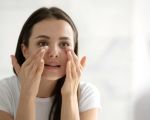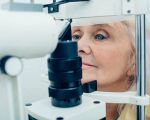- 1-Understanding-Eye-Strain-in-Healthcare-Workers
- 2-Key-Factors-Causing-Eye-Strain-in-the-Healthcare-Industry
- 3-Effective-Strategies-to-Manage-Eye-Strain-in-Healthcare-Workers
- 4-Technology-and-Tools-to-Support-Eye-Health
- 5-Real-World-Examples-and-Professional-Advice
1. Understanding Eye Strain in Healthcare Workers
Healthcare professionals face unique challenges that often lead to eye strain, a condition characterized by discomfort, dryness, blurred vision, and headaches. Due to long hours spent focusing on screens, intricate procedures, and detailed patient data, eye strain is a common yet overlooked issue in the healthcare sector. Understanding the nature of eye strain and its impact on productivity and wellbeing is essential for developing effective management strategies.
Healthcare workers’ reliance on electronic health records, diagnostic imaging, and close-up manual tasks intensifies the visual demand placed on their eyes, increasing the risk of digital eye strain or computer vision syndrome.
2. Key Factors Causing Eye Strain in the Healthcare Industry
2.1 Prolonged Screen Time and Focused Visual Tasks
Electronic devices are integral to modern healthcare, yet prolonged exposure to monitors without adequate breaks can cause fatigue and strain. Similarly, surgeons and lab technicians focusing on tiny details for extended periods face intense visual demands.
2.2 Inadequate Lighting and Glare
Many clinical environments have harsh or inconsistent lighting, which can cause glare and increase eye fatigue. Suboptimal lighting conditions force the eyes to work harder, worsening symptoms of strain.
2.3 Environmental Factors and PPE Use
Wearing personal protective equipment (PPE), such as face shields or goggles, may cause reflections and fogging, further impairing vision and contributing to discomfort.
3. Effective Strategies to Manage Eye Strain in Healthcare Workers
3.1 Implementing the 20-20-20 Rule
One widely recommended approach is the 20-20-20 rule: every 20 minutes, healthcare workers should take a 20-second break to look at something 20 feet away. This simple habit helps relax eye muscles and reduce fatigue.
3.2 Optimizing Work Environment Lighting
Adjusting ambient lighting to reduce glare on screens and work surfaces is crucial. Using adjustable task lights and anti-glare screen protectors can significantly alleviate strain.
3.3 Using Specialized Eyewear
Blue light filtering glasses and prescription eyewear designed for digital tasks help reduce the harmful effects of prolonged screen exposure. Custom lenses tailored to individual needs can enhance comfort and visual clarity.
3.4 Regular Eye Exams and Hydration
Routine check-ups with eye care professionals ensure early detection of vision problems. Additionally, staying hydrated and using lubricating eye drops can combat dryness caused by extended screen time and PPE usage.
4. Technology and Tools to Support Eye Health
4.1 Ergonomic Workstations
Adjustable monitors positioned at eye level and at appropriate distances reduce unnecessary eye movement and strain. Healthcare facilities that invest in ergonomic setups often see improved worker comfort and productivity.
4.2 Software Solutions
Applications that remind users to take breaks or adjust screen brightness automatically can be invaluable. Night mode or dark mode features also reduce blue light exposure during late shifts.
4.3 Advanced Protective Equipment
Innovations in PPE, including anti-fog coatings and better fitting designs, improve visual clarity while maintaining safety standards.
5. Real-World Examples and Professional Advice
5.1 Case Study: A Hospital’s Eye Health Initiative
At a major metropolitan hospital, an eye health program introduced mandatory 20-20-20 breaks, upgraded lighting, and provided blue light glasses to staff. Within six months, reports of eye strain decreased by 40%, and staff reported better overall comfort during shifts.
5.2 Expert Recommendations
Ophthalmologists emphasize the importance of awareness and proactive care. Combining environmental adjustments with personal habits creates the best defense against eye strain. For healthcare workers seeking tailored solutions, consulting specialists and exploring products at Eye Docs can be beneficial.








